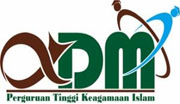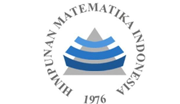Influence of World Development Indicators on Human Development: A Multiple Linear Regression and PSI Ranking Approach
Abstract
This study investigates the influence of World Development Indicators (WDI)
on the Human Development Index (HDI) within the regional context of Asian
countries. Understanding the interaction between these indicators and HDI
holds strategic relevance for enhancing the formulation of evidence-based
development policies. The analysis focuses on five key indicators: population
growth, voice and accountability, government effectiveness, GDP per capita
growth, and control of corruption. These variables represent essential
dimensions of governance and socioeconomic advancement. The dataset
comprises information from 46 Asian countries sourced from the World Bank.
The methodological framework integrates multiple linear regression to evaluate
the magnitude of each variable’s contribution to HDI. The Preference Selection
Index (PSI) is utilized to establish a performance-based ranking of countries
grounded in the selected indicators. Results demonstrate that population growth
and government effectiveness have significant impacts on HDI outcomes, while
the remaining variables exhibit no statistically significant effects. Comparative
analysis using PSI reveals inconsistencies between development indicator values
and actual HDI positions. South Korea shows the highest consistency between
quantitative rankings and HDI classification. These findings offer practical
insights for policy prioritization by identifying the most influential determinants
of human development in the region. The study emphasizes the importance of
tailored development strategies and encourages future research to strengthen
model robustness through control variable inclusion, sensitivity analysis, and
non-linear modeling approaches.
Keywords
Full Text:
PDFReferences
Sharma, P. and Rana, V., "Human development in South Asia: The role of education, health, and governance". Asian Journal of Comparative Politics, 8(1), pp.89–107, 2022, https://doi.org/10.1177/20578911211046978
World Bank. "World Development Indicators" 2023. Washington, DC: World Bank. https://databank.worldbank.org
N. Rogge and G. Archer, “Measuring and analyzing country change in establishing ease of doing business using a revised version of World Bank’s ease of doing business index,” European Journal of Operational Research, vol. 290, no. 1, pp. 373–385, 2021, doi: 10.1016/j.ejor.2020.07.065.
J. Hamilton, X. Basurto, H. Smith, and J. Virdin, “How does the World Bank shape global environmental governance agendas for coasts? 50 years of small-scale fisheries aid reveals paradigm shifts over time,” Global Environmental Change, vol. 68, p. 102246, 2021, doi: 10.1016/j.gloenvcha.2021.102246.
Nawaz, S. and Rehman, H.U., ”Economic governance and HDI disparity in South Asia”. Pakistan Journal of Statistics and Operation Research, 17(1), pp.45–60, 2021, https://doi.org/10.18187/pjsor.v17i1.3370.
S. Rahim et al., “Do natural resources abundance and human capital development promote economic growth? A study on the resource curse hypothesis in Next Eleven countries,” Resources, Environment and Sustainability, vol. 4, p. 100018, 2021, doi: 10.1016/j.resenv.2021.100018.
R. Jedwab, P. Loungani, and A. Yezer, “Comparing cities in developed and developing countries: Population, land area, building height and crowding,” Regional Science and Urban Economics, vol. 86, p. 103609, 2021, doi: 10.1016/j.regsciurbeco.2020.103609.
A. M. Larson, J. P. Sarmiento Barletti, and N. Heise Vigil, “A place at the table is not enough: Accountability for Indigenous Peoples and local communities in multi-stakeholder platforms,” World Development, vol. 155, p. 105907, 2022, doi: 10.1016/j.worlddev.2022.105907.
J. Arayankalam, A. Khan, and S. Krishnan, “How to deal with corruption? Examining the roles of e-government maturity, government administrative effectiveness, and virtual social networks diffusion,” International Journal of Information Management, vol. 58, p. 102203, 2021, doi: 10.1016/j.ijinfomgt.2020.102203.
T. Fu and Z. Jian, “Corruption pays off: How environmental regulations promote corporate innovation in a developing country,” Ecological Economics, vol. 183, p. 106969, 2021, doi: 10.1016/j.ecolecon.2021.106969.
Cheung, M.Y. and Lee, J.H., WDI-based forecasting of regional HDI using ML and PSI. Journal of Economic Forecasting, 81(2), pp.73–95, 2024.
S. C. Agu, F. U. Onu, U. K. Ezemagu, and D. Oden, “Predicting gross domestic product to macroeconomic indicators,” Intelligent Systems with Applications, vol. 14, 2022, doi: 10.1016/j.iswa.2022.200082.
S. H. Law, C. H. Ng, A. M. Kutan, and Z. K. Law, “Public debt and economic growth in developing countries: Nonlinearity and threshold analysis,” Economic Modelling, vol. 98, pp. 26–40, 2021, doi: 10.1016/j.econmod.2021.02.004.
J. Assa, “Less is more: The implicit sustainability content of the human development index,” Ecological Economics, vol. 185, p. 107045, 2021, doi: 10.1016/j.ecolecon.2021.107045.
T. Ladi, A. Mahmoudpour, and A. Sharifi, “Assessing impacts of the water poverty index components on the human development index in Iran,” Habitat International, vol. 113, p. 102375, 2021, doi:
Yusuf, M. and Ramli, M., “Nonlinear models for explaining disparities in human development”. Journal of Social and Economic Development, 22(2), pp.284–297, 2020, https://doi.org/10.1007/s40847-020-00110-3.
W. Su, S. Chen, C. Zhang, and K. W. Li, “A subgroup dominance-based benefit of the doubt method for addressing rank reversals: A case study of the human development index in Europe,” European Journal of Operational Research, vol. 307, no. 3, pp. 1299–1317, 2023, doi: 10.1016/j.ejor.2022.11.030.
J. Zheng and X. Wang, “Impacts on human development index due to combinations of renewables and ICTs – new evidence from 26 countries,” Renewable Energy, vol. 191, pp. 330–344, 2022, doi: 10.1016/j.renene.2022.04.033.
World Bank, Data For Better Lives: A World Bank Group Flagship Report, 2021, doi: 10.1596/978-1-4648-1607-9.
International IDEA, “Global Democracy Index and Human Development: Comparative Analysis. Stockholm: International Institute for Democracy and Electoral Assistance”. 2023
Huang, Y. and Zhang, K., Time lag effect between policy indicators and development outcomes. Policy Studies, 43(5), pp.610–629. 2022. https://doi.org/10.1080/01442872.2022.2036811.
M. Liu et al., “Using multiple linear regression and random forests to identify spatial poverty determinants in rural China,” Spatial Statistics, vol. 42, p. 100461, 2021, doi: 10.1016/j.spasta.2020.100461.
Q. H. Luu, M. F. Lau, S. P. H. Ng, and T. Y. Chen, “Testing multiple linear regression systems with metamorphic testing,” Journal of Systems and Software, vol. 182, p. 111062, 2021, doi: 10.1016/j.jss.2021.111062.
K. Maniya and M. G. Bhatt, “A selection of material using a novel type decision-making method: Preference selection index method,” Materials and Design, vol. 31, no. 4, pp. 1785–1789, 2010, doi: 10.1016/j.matdes.2009.11.020.
V. K. Pathak, R. Singh, and S. Gangwar, “Optimization of three-dimensional scanning process conditions using preference selection index and metaheuristic method,” Measurement, vol. 146, pp. 653–667, 2019, doi: 10.1016/j.measurement.2019.07.013.
DOI: http://dx.doi.org/10.30829/zero.v9i1.23925
Refbacks
- There are currently no refbacks.

This work is licensed under a Creative Commons Attribution-ShareAlike 4.0 International License.
Publisher : Department of Mathematics Faculty of Science and Technology Universitas Islam Negeri Sumatera Utara Medan | |
✉️ Email: zero_journal@uinsu.ac.id 📱 WhatsApp:085270009767 (Admin Official) | |
 |  |  |  |  |



